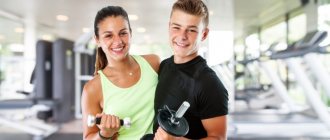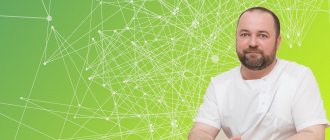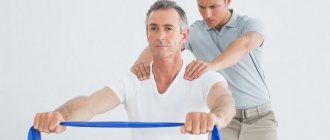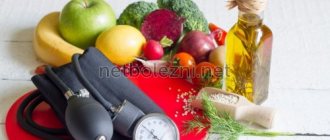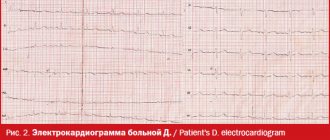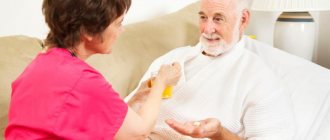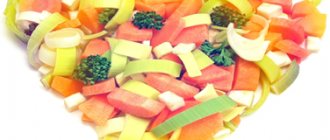STATE AUTONOMOUS PROFESSIONAL EDUCATIONAL INSTITUTION
NOVOSIBIRSK REGION
"BARABINSKY MEDICAL COLLEGE"
METHODOLOGICAL DEVELOPMENT
THEORETICAL LESSON FOR TEACHER
Specialty 34.02.01 Nursing (with basic training)
Professional module 02. Participation in diagnostic, treatment and rehabilitation processes
MDK 02.02. Implementation of rehabilitation measures
Topic 6.20. Massage as a method of rehabilitation for diseases of the cardiovascular system.
Developer – teacher Yashunina A.S.
2020
METHODOLOGY SHEET
Type of lesson –
combined lesson
Type of activity
– obtaining and consolidating new knowledge
Duration
–
90 min.
OBJECTIVES OF THE LESSON
1. Learning objectives:
— to develop professional competence
:
— Carry out rehabilitation activities within the limits of their powers in primary health care and hospital settings (PC 2.7.)
2. Developmental goals:
— Understand the essence and social significance of your future profession, show sustained interest in it. (OK 1).
— Lead a healthy lifestyle, engage in physical education and sports to improve health, achieve life and professional goals. (OK 13)
3. Educational goals:
— create conditions for developing the ability to organize one’s own activities, choose standard methods and ways of performing professional tasks, evaluate their implementation and quality (OK 2).
Teaching methods
– explanatory and illustrative, reproductive; elements of information and communication technologies (use of multimedia presentation).
Location of the lesson
- college auditorium.
Medical massage
Massage after a stroke
A stroke is an acute disorder of cerebral circulation.
This disease is recognized as one of the most important health problems because it is the third leading cause of death. Unfortunately, in recent years this disease has become significantly younger.
One of the most common severe complications after a stroke are motor disorders, usually unilateral paralysis of the arms and legs. Timely initiation of treatment and rehabilitation procedures, their systematicity and duration, will help to quickly restore activity to nerve cells that are in a state of reduced activity or complete inhibition, which will speed up the patient’s rehabilitation. The emotional state of the patient and the person caring for him is no less important. A positive outlook on what is happening, determination, and the presence of various interests helps to overcome the disease.
The recovery period must begin a few days after the stroke. First of all, it is necessary to determine the amount of permissible physical and psycho-emotional stress.
Specialized centers and rehabilitation departments provide enormous assistance. The developed complexes for step-by-step rehabilitation of a person can be used at home. These complexes allow the patient to gradually return to normal and even active life. Upon returning home, the patient’s rehabilitation should initially be carried out under the supervision of a neurologist or rehabilitation specialist.
To perform massage manipulations and exercises at home, the massage therapist should:
- collect complete information about the presence of contraindications;
- find out which muscles in the patient are relaxed and which are tense;
- master the necessary massage techniques;
- learn how to properly position paralyzed limbs.
Performing massage and therapeutic exercises allows you to:
- improve lymph flow and blood flow in the body, which is especially important for paralyzed limbs;
- promote the restoration of motor functions in the affected limbs;
- prevent the occurrence of contractures (contractura, lat. - tightening, compression, narrowing) in physiology, prolonged, persistent, often irreversible contraction (rigor) of a muscle fiber or its section;
- reduce muscle tone of spastic muscles and the severity of conjugal movements;
- reduce the intensity of pain or get rid of it completely;
- influence the patient’s positive attitude;
- prevent congestive pneumonia in the elderly;
- prevent the formation of bedsores.
Recommendations for massage after a stroke
It is recommended to start massage as early as possible, if you feel well - literally on the second day. So, for ischemic stroke without complications and in the absence of contraindications, massage is prescribed for 2-4 days, and for hemorrhagic stroke, for 6-8 days. The duration of the first procedures varies from 5 to 10 minutes, gradually extending from 10 to 30 minutes. The increase in the intensity of exposure is strictly individual and depends on the patient’s condition. The course consists of 20-30 procedures, which are carried out daily. After a 1.5-2 month break, massage treatment is repeated.
Each massage technique is repeated 3-4 times. From the 1st to the 3rd session, the massage is performed only in the shoulder and thigh area, without turning the patient onto his stomach. From the 4th-5th procedure, taking into account the patient’s condition, the area of the chest, forearm, hand, lower leg and foot is added. Cover the back and lumbar region 6-8 times, placing the patient on his healthy side.
Massage while lying on your stomach can be performed at a later date in the absence of contraindications associated with heart disease. During periods of strict bed rest, massage can only be performed by a highly qualified massage therapist, preferably under the supervision of a doctor. At home, a caregiver can perform a massage only during the period when the patient’s condition has significantly improved. In order to increase the effectiveness of the performed massage and therapeutic exercises, it is desirable to pre-warm the paralyzed limbs. For these purposes, you can use a salt heating pad, paraffin and ozokerite applications, and a warm blanket.
The massage begins from the front surface of the affected leg, because with hemiparesis (paralysis) the lower extremities are affected less than the upper ones. Next, massage the pectoralis major muscle. Then they move to the shoulder, forearm, hand, fingers.
Performing massage movements on the back of the leg - first massage the thigh, then the lower leg, foot. All movements on the back are carried out along the lymph flow.
Techniques used: various types of superficial stroking, light rubbing, continuous vibration (shaking, shaking). So, for a group of spastic muscles, light stroking and, somewhat later, rubbing techniques are used. For some muscles, light vibration is acceptable.
The following are susceptible to spastic conditions:
- muscles of the inner (front) surface of the shoulder, forearm and palmar surface of the hand;
- pectoral muscle on the sore side;
- muscles that extend the knee (quadriceps) and externally rotate the thigh (obturator externus and quadratus muscles);
- muscles of the posterior surface of the lower leg (gastrocnemius, posterior tibial, long flexor and 1st fingers);
- muscles of the sole.
On non-spastic areas: the back of the arm, the front of the shin, the back of the foot, deep stroking techniques, intense rubbing, and even light kneading are used.
Any striking techniques (patting, tapping, chopping, etc.) are contraindicated.
Preparing the patient for massage
First of all, it should be remembered that anxiety, physical stress, fatigue, and cold impair the ability to move. In this regard, before starting a massage, you should achieve a maximum reduction in muscle tone, i.e. muscle relaxation. To do this, special relaxation exercises are performed. First - on a healthy area, then - on the affected one. To check whether the patient was able to relax the muscles, it is necessary to lift the patient’s healthy limb and, insuring it from a blow, release it - the limb should fall freely. If the patient lies on his back, then place a cushion under his knees and a pillow under his head. When synkinesis (friendly movements) occurs, the non-massaged limb is fixed with a bag of sand or salt weighing about 0.5 kg. Lying on your healthy side, you can massage the outer surface of your leg. With the patient lying on his stomach, the back surface of the leg is massaged, while a small pillow is placed under the stomach and head, and a bolster is placed under the ankle joints. If there are disturbances in the functioning of the heart, the patient is massaged on his side. To maintain warmth, the patient is covered with a blanket, exposing only the massaged area for massage.
Massage technique
Leg massage Thigh While lying on your back, massage the front and inner surfaces of the thigh. Begin with light superficial stroking along the inner, middle (front) and outer surface of the thigh. The movements are directed from the knee joint to the groin area. Then they are joined by light, slow spiral and zigzag strokes. The correct execution of these movements is a slight relaxation of the spastic muscles. Then light rubbing with the pads of four fingers and the base of the palm is added to these techniques. Each technique is repeated 3-4 times. With the patient lying on his stomach or healthy side, a massage is performed on the back of the thigh. On the back of the thigh there are muscles involved in hip extension, to which, taking into account their spastic state, gentle techniques such as stroking and light rubbing should be applied. They are performed by moving from the popliteal fossa to the gluteal fold. The buttock is massaged with stroking movements, starting from the posterior surface of the sacrum towards the greater trochanter (protrudes on the upper outer surface of the thigh, can be easily felt during palpation).
Lower leg Moving on to the lower leg, take into account that on its front surface there are extensors of the foot, which are usually less spastic. Therefore, more intensive techniques are allowed. They start with superficial strokes, moving on to deeper ones. Next, more energetic rubbing techniques are used, as well as transverse and longitudinal kneading. The massage is carried out with all fingers and palms, from the ankle to the knee joint. The gastrocnemius and soleus muscles (responsible for flexion of the knee joint and foot), extending to the back of the lower leg, are very spastic. They are massaged using a gentle technique. Movements begin from the heel tubercle towards the popliteal fossa.
Foot On the back of the foot there are muscles (digit extensors) with mild spasticity. Therefore, the techniques of stroking, rubbing, and kneading are used. The masseur fixes the foot, placing the patient’s heel in his palm, with the toes pointing upward, and with the second, third and fourth fingers of his free hand he massages its back surface from the tips of the fingers to the shin. Finishes by stroking and rubbing the interosseous spaces with the first finger, which will clearly stand out in the form of indentations on the back of the foot if you spread your toes. On the plantar side of the foot there are muscles with increased tone, which are massaged using a gentle technique, moving from the toes to the heel.
Hand massage During bed rest, hand massage is carried out with the patient lying on his back, and at the end in a sitting position (in this case, the patient’s hand is placed on a nearby table). Massage of the pectoralis major muscle On the affected side, this muscle is in a state of hypertonicity, so the massage is performed using gentle techniques: superficial stroking, very light rubbing with the pads of four fingers and light vibration in the form of shaking or shaking. Shaking is carried out using the first and second fingers, as an option - you can put the hand on the chest and move it along the massaged area in the direction from the sternum to the armpit.
Shoulder The trapezius and deltoid muscles located here do not have increased tone, so deep stroking, intensive rubbing and light kneading can be used. It is necessary to move from the VI-VII cervical vertebrae (if you lower your head to the chest, the VII vertebra will protrude more than the others) to the end of the deltoid muscle, rubbing and kneading the latter well. Then they move on to massaging the triceps muscle, which is an extensor of the forearm. The tone of this muscle is not so strong, therefore, if the possibility of voluntary movements is completely lost, it is advisable to start the massage with this particular muscle. Here they use the techniques of superficial and deep stroking, vigorous rubbing and light kneading. The movements are directed from the elbow joint along the outer back surface of the shoulder to the shoulder joint. Next, they move on to massage the biceps muscle, which is a flexor of the forearm and shoulder. Due to the fact that she is very spastic, only light stroking and rubbing are used. The movements proceed from the ulnar fossa along the inner anterior surface of the shoulder, reaching the armpit. When performing these manipulations, you should be especially careful and careful, since the brachial artery, veins and nerves pass along the inner surface of the shoulder (on the internal groove), and under no circumstances should any pressure be applied to them.
Forearm It is advisable to start the massage with the muscles of the posterior (outer) surface of the forearm (extensors of the hand and forearm), since they are overstretched. Perform techniques of superficial and deep stroking, rubbing, kneading. The movements are directed from the wrist joint along the back surface of the forearm to the olecranon process. Then they move on to the muscles of the anterior (inner) surface of the forearm (flexors of the hand and forearm) - they are spastic, so they are only lightly stroked and rubbed in the direction from the wrist joint to the ulnar fossa.
Hand and fingers Due to overextension of the muscles of the back of the hand, massage begins precisely from the back of the fingers, moving to the back of the hand. Perform energetic techniques: deep stroking, rubbing, kneading. Due to the high tone of the muscles of the palmar surface of the hand, only superficial stroking is performed.
Back massage The patient is placed on his stomach or healthy side, with a pillow placed under his head. When performing a massage, all techniques are used, but in a soft and gentle manner, so as not to increase muscle tone, while improving tissue nutrition. Direction of movements along the lymph flow.
Exercises for stroke
Passive movements can be performed 1-2 weeks after a stroke, if the patient’s condition allows. Such exercises stimulate the appearance of active movements, improve lymph and blood flow, precede the formation of contractures, and reduce muscle spasticity.
Sequence of development of arm joints: 1. shoulder; 2. elbow; 3. wrist; 4. finger joints.
Sequence of development of leg joints: 1. hip; 2. knee; 3. ankle; 4. finger joints.
That is, we first work with large joints, then move on to smaller ones. You need to start with healthy limbs, then work on the paralyzed ones. To begin with, perform from 1 to 5 movements, gradually increasing the number of times to 10. If the patient’s well-being allows, the exercises should be performed slowly, smoothly and in full, once in the morning in combination with a massage, the second time at the end of the afternoon rest.
It is necessary to ensure that each movement is performed in isolation. Therefore, the caregiver must fix the patient's limb above the joint with one hand, and with the other perform movements below the joint.
Be sure to teach the patient to slowly inhale and then exhale through slightly parted lips, while pronouncing the sound “w-w-w” and without holding his breath. This extended exhalation helps relax the muscles during passive and active movements. A simple rolling pin can serve as an assistant in relaxing the muscles of paralyzed limbs. It is necessary to roll the patient's palms and feet over its surface. The patient should also be told that when muscle relaxation occurs, a feeling of heaviness arises in the affected limb. It is advisable to show yourself the state of the muscles: at rest, during tension, during relaxation.
When the patient is able to perform the exercises himself, you can introduce exercises from the complex of active gymnastics, which are more conducive to the restoration of movements. Usually this opportunity appears in the third week after a stroke. Lying on his back or healthy side, the patient performs exercises with the affected arm and leg that he can do (flexion, extension, abduction, adduction, rotation) for 10 to 30 minutes twice a day. To make the task easier, the patient can hang his arm or leg on a towel pre-attached to something. You must not allow yourself to become overtired, so you need to take 2-4 breaks of 2-4 minutes each. Also, the volume of active movements increases significantly: exercises with cubes, pyramids, tops, modeling from plasticine, fastening and unfastening buttons, tying and untying ropes.
As the sick body recovers, it is recommended to perform exercises to restore and strengthen all the muscles of the body. A set of such exercises is similar to regular morning exercises.
Treatment by position
To prevent the development of contracture of paralyzed limbs, which will make it difficult to restore impaired movements, you should learn how to position them correctly. It is necessary to start doing this during the period of bed rest. Sequence of laying the limbs in a supine position. The extended paralyzed arm is placed on a pillow and turned palm up. At the same time, they take it to the side at an angle of 90º (in cases of severe pain, you can start with a smaller angle of abduction, gradually bringing it to 90º), making sure that starting from the shoulder joint and along the entire length, the arm is in a horizontal plane. In this case, a roller filled with cotton wool or padding polyester and wrapped in oilcloth is placed in the forearm cavity. The hand with the fingers spread to the side, on the palm side, is fixed with a splint cut from some light material and covered with material (bandage, gauze - for softness), repeating the shape of the arm and hand. They bandage it to the middle of the forearm. To fix the entire arm, a bag of salt or sand weighing 0.5 kg is placed on the forearm area. The affected leg is bent at the knee 15-20º, placing a cushion under it. The foot is bent at an angle of 90º, while fixing it in a special box, so that the foot rests with the sole against one of its walls. And the box itself is secured so that it is motionless. With this position of the limbs, the patient should remain for 1.5 to 2 hours.
The sequence of laying the limbs in a lying position on the healthy side
The patient's arm is bent at the shoulder and elbow joints and a pillow is placed under it, and the leg at the hip, knee and ankle joints is placed on another pillow. With this position of the limbs, the patient should remain for 30 to 50 minutes. The recommended positions of the limbs should be changed from a supine position to a lying position on the healthy side every 1.5 - 2 hours. With the exception of time: allocated for food, therapeutic exercises, massage, as well as afternoon rest and night sleep/
MOTIVATION
Cardiovascular diseases remain the leading cause of death worldwide. According to WHO, in the Russian Federation they account for 56% of all deaths, with almost half of them due to ischemic heart disease. That is why one of the primary tasks of healthcare remains the search for more effective methods of prevention and treatment of patients with cardiovascular diseases.
At present, the previously prevailing opinion about the need for complete rest or restriction of the patient’s mobility during the period of treatment has been completely rejected. On the contrary, a sedentary lifestyle is one of the significant factors in the development of diseases such as atherosclerosis, hypertension, etc. It has become clear that physical activity in patients leads to a shorter recovery period and a reduced risk of complications such as pulmonary embolism or heart failure. Thus. Currently, there is a clear understanding that interventional interventions and pharmacological treatment of cardiovascular diseases alone are not enough. In this lesson we will look at the most common and effective types and methods of massage for diseases of the cardiovascular system.
Massage is the basis of recovery after myocardial infarction
Patients with cardiovascular diseases are a special risk group. These are people who, at a certain point in their lives, without noticing it, found themselves in a vicious circle, the way out of which is not always easy to find. A sedentary lifestyle, poor diet and stress, along with other reasons, lead to disturbances in the functioning of the heart muscle, changes in the structure of the walls of blood vessels ( atherosclerosis ) and changes in blood rheology ( formation of blood clots ). In turn, weak heart muscle and altered blood vessels sharply reduce the body's endurance, which entails even greater limitation of mobility and stress. This completes the circle. And most often, the impetus for finding a way out for such patients is the development of a life-threatening condition - myocardial infarction.
Myocardial infarction , in which acute heart failure develops, is a consequence of a pathological process that often develops in youth. And the main reason is the failure of the vascular wall in combination with a violation of blood rheology. And it is very important to organize proper treatment on the first day.
Massage for myocardial infarction is one of the methods that, even on a hospital bed, allows you to eliminate one of the most important links in the vicious circle - physical inactivity.
It is important to note that massage in patients with myocardial infarction should be performed by a specialist with appropriate qualifications and only as prescribed by a doctor.
There are several specially developed techniques for performing massage in patients who have suffered a myocardial infarction. And the choice of technique is carried out jointly by the massage therapist and the attending physician. Some methods involve starting massage sessions almost immediately after stabilization of vital signs, that is, on the first day.
In the first days, the massage lasts no more than 5–7 minutes and affects only the lower limbs. Depending on the patient’s condition, the duration of the massage session is increased and the massage therapist touches not only the legs, but also the right arm. After 5–7 sessions, the session includes work with the back muscles and buttocks in the starting position lying on your side. Breast massage always begins with light stroking movements in the area of the pectoralis major muscles and sternum and lasts from 3 to 5 minutes. As soon as the patient is allowed to sit, the massage therapist begins to work with the upper back and cervical-collar area. Thus, increasing the duration of the procedure to 20–30 minutes.
Massage for myocardial infarction is indicated twice a day .
Whatever the technique chosen for the massage, it sets itself the following tasks :
- Reducing the load on the heart muscle by stimulating blood circulation in peripheral tissues. When performing massage techniques, there is a rush of blood to the massaged area, the formation of new capillaries, thereby due to an increase in the volume of the vascular bed and, with a constant amount of blood, the pressure in the circulatory system decreases.
- Reduced pain, including as a result of reduced load on the affected myocardium.
- Improving the nutrition of the heart muscle itself, by increasing the lumen of the coronary arteries and reducing congestion.
- Stimulation of blood and lymph flow in peripheral tissues, which is the most important mechanism in the prevention and treatment of edema and bedsores.
Massage is a starting point for preparing the patient for subsequent types of physiotherapeutic rehabilitation . Depending on the severity of the myocardial infarction, the patient, after being transferred from the intensive care unit, does not have the strength to even independently change his body position in bed. The massage therapist’s task is not only to prepare the patient’s cardiovascular system to perform once familiar actions, but also to morally support him on the path to recovery.
Appendix No. 2
Test questions to consolidate knowledge on topic 6.20. Massage as a method of rehabilitation for diseases of the cardiovascular system
Give oral answers to the questions - frontal survey:
- Name the massage technique for ischemic heart disease.
Massage technique. First, massage the collar area in a sitting position, and then massage the lower extremities of the abdomen in a lying position. Techniques include: stroking, rubbing and kneading (especially when massaging the legs). The chest is only stroked. Techniques such as chopping, beating, and patting are excluded. The duration of the massage is 10-15 minutes. The course consists of 15-20 procedures, 3-4 courses are carried out per year.
- List the objectives of massage for myocardial infarction.
Objectives of massage: relieve pain, psycho-emotional tension, accelerate muscle blood flow, relieve reflex mechanisms that increase spasm of coronary vessels, prevent thromboembolism, improve coronary circulation.
- Name a massage technique for hypertension.
Massage technique. Patient's sitting position. Massage the back of the neck, starting from the scalp, then the shoulder area, upper back and spinal column. Continuous stroking, semicircular rubbing, transverse and longitudinal kneading are used. The mastoid processes are especially carefully massaged. Massage of the lower extremities is indicated; blood pressure can be normalized by massaging the abdomen. The duration of the massage is 10-15 minutes.
- List the tasks of massage for hypertension.
The objectives of massage are: to normalize the functional state of the nervous system, improve blood circulation and metabolism, reduce the excitability of the neuromuscular apparatus of the vascular wall.
- Massage technique for MI?
Massage technique. The first general massage procedure is carried out on the first day, and then repeated 1-2 times a day for 5-15 days. After the massage procedure, the patient breathes oxygen for 10-15 minutes. The technique and duration (10-20 minutes) of massage depend on the depth and extent of myocardial infarction according to ECG data, the general well-being of the patient and the functional state of the cardiovascular and respiratory systems. The following techniques are used: stroking, rubbing and shallow kneading. The back, lower limbs, stomach and upper limbs are massaged, the chest is stroked. Back massage is carried out with the patient on the right side, while the doctor or massage therapist supports the patient’s left hand with his left hand. hand, and with the right hand performs a back massage (rubbing, ordinary kneading, stroking).
MASSAGE FOR DISEASES OF THE CARDIOVASCULAR SYSTEM[edit | edit code]
For diseases of the cardiovascular system, massage aims to normalize the functional state of the nervous, vascular and sympathetic-adrenal systems, eliminate congestion and improve blood circulation in the small and large circles, activate metabolism and trophic processes in tissues, etc.
For patients with cardiovascular diseases, massage is an important means of therapy in combination with a motor regimen (passive, active and other movements). Massage helps prepare the neuromuscular system and cardiovascular system for physical activity and more quickly relieve fatigue after it. He actively promotes medical rehabilitation of patients with cardiovascular diseases and prepares them for physical exercise. Under the influence of massage, in patients with diseases of the circulatory system, the indicators of the oscillographic curve, which characterizes the state of vascular tone and blood pressure, change.
Thanks to the massage, peripheral vessels moderately dilate, the work of the left atrium and left ventricle is facilitated, and the pumping ability of the heart is enhanced. Massage of the chest enhances its suction effect, eliminates hemo- and lymphostasis of organs and tissues. Impulses entering the central nervous system from reflexogenic zones play a certain role in the self-regulation of blood circulation and have a humoral effect on its central parts and on the chemoreceptors of the cardiovascular system.
Metabolic products formed in tissues under the influence of massage also help to enhance the activity of the cardiovascular system.
Thanks to the increased blood flow that occurs under the influence of massage, it is possible to equalize and maintain a constant body temperature. Massage promotes a more active supply of oxygen and nutrients to the body and, at the same time, a more rapid removal of decay products from the body, eliminating stagnation not only in the massaged area, but also in areas located above or below it. This is important especially in cases where it is not possible to directly influence the injured area of the body. With the help of massage, you can directly or indirectly, using certain reflex connections, influence internal organs.
Massage is extremely important, influencing the entire body as a whole, especially in bed rest. For example, after a massage, the number of capillaries in 1 mm2 of muscle cross-section increases from 31 to 1400, and the total capillary capacity increases by 140 times or more. Thus, using a rational massage session technique, you can control blood pressure and alleviate the patient’s condition.
Massage improves the contractile function of the myocardium, increases the stroke and minute volume of blood, reducing peripheral vascular resistance, increases blood supply to peripheral vessels, and helps to economize the work of the heart.
Appendix No. 3
Assignment for independent extracurricular work of students
Topic 6.20. Massage as a method of rehabilitation for diseases of the cardiovascular system
Discipline,
section, topic
Kind of activity
Literature
1.
Topic 6.20.
“Massage as a method of rehabilitation for diseases of the cardiovascular system.”
1. Study the lecture notes and the text of the textbook.
- Dubrovsky V.I. “Therapeutic massage” [Text]: textbook for medical schools and colleges / V.I. Dubrovsky; Moscow Publishing house "GEOTAR-MED", 2004 - 93 p.
- Epifanova V.A. “Fundamentals of Rehabilitation” [Text]: textbook for medical schools and colleges / V.A. Epifanova; Moscow Publishing house "GEOTAR-MED", 2015 - 163 p.
- Lecture notes
MASSAGE TECHNIQUE FOR A PATIENT IN A POST-INFARCTION CONDITION[edit | edit code]
In the post-infarction state, massage is prescribed from the first days. The objectives of massage are to bring the patient out of a serious condition, restore blood and lymph circulation, and regulate metabolism.
The initial position of the patient during the procedure is lying on his back. The first massage sessions begin with the feet. The patient's leg is raised and lies on the upper third of the massage therapist's thigh. This position promotes natural blood flow and relaxation of the thigh muscles, which reduces the load on the heart.
The following techniques are performed on the thigh: longitudinal alternating stroking (4 - 6 times), longitudinal squeezing (3 - 5 times), stroking (3 - 5 times), double kneading (3 - 5 times), stroking (3 - 6 times) , felting (3 - 5 times). On the lower leg - longitudinal or combined stroking (6 - 8 times), any squeezing (3 - 5 times), kneading with the base of the palm, with the pads of four fingers (2 - 4 times), stroking (4 - 7 times). On the foot - combined stroking (3-5 times), squeezing with the edge of the palm (4-7 times), rubbing the intermetal spaces straight, zigzag with the pads of four fingers (3-5 times). In all areas, the set of techniques is repeated 2 - 5 times. The same is done on the second limb.
Then the right hand is massaged. The massage is done in five positions. The patient lies on his back. On the shoulder, apply longitudinal straight stroking (3-4 times), longitudinal squeezing (2-3 times), ordinary kneading (2-3 times), stroking (4-6 times). The same goes for the forearm. Massage can be performed 2 times a day, daily or every other day. Session time: 5-7 minutes.
If the reaction is positive, after 5-7 sessions a massage of the back and buttocks is added. The patient's position is lying on the right side. The duration of the session increases to 10 minutes. Massage is provided daily.
Start the massage from the back. The patient lies on his right side, the lower leg is extended, the upper leg is bent at the hip and knee joints. This position gives stability to the pose. The massage begins on the right side of the back: stroking (3 - 6 times), squeezing (4 - 6 times), kneading with the base of the palm (3 - 5 times). The complex is repeated 2 - 3 times. On the left side, the session is performed using a similar method, but kneading with the fingertips along the long back muscles (5 - 7 times), rubbing with the fingertips along the spinal column from the pelvis to the head (3 - 7 times) is added.
On the gluteal muscles, stroking (3 - 5 times), squeezing (3 - 7 times), kneading with the phalanges of the fingers bent into a fist and the base of the palm (3 - 7 times each) are carried out.
If the patient is allowed to sit or lie on his stomach, the duration of the first 5-7 sessions increases to 10-12 minutes, and if he feels well - up to 20 minutes.
The back massage begins on the right side with the patient lying on his stomach. Particular attention should be paid to the paravertebral zones (C3-C4, Dl-D8). Perform longitudinal alternating stroking (4 - 7 times), squeezing (4 - 6 times), kneading on long muscles with the base of the palms of both hands (4 - 7 times), phalanges of fingers bent into a fist (3-6 times), squeezing again (4-6 times) and stroking (5-7 times). On the latissimus dorsi muscles, double circular kneading (4-6 times), with phalanges of fingers bent into a fist (3-6 times), and shaking (3-4 times) are used. The whole complex is repeated 2 - 6 times. Next, rubbing with the pads of four fingers on the intercostal spaces: straight, combined, dotted (2 - 4 times). On the fascia of the trapezius muscle, rubbing with the pad of the thumb is straight, spiral (2 - 4 times), with the pads of four fingers (2 - 4 times). At the angle of the shoulder blade - rubbing with the edge of the palm (3 - 5 times). The whole complex is repeated 2 - 4 times. The same is done on the other side. Finish the back massage with longitudinal alternating stroking (4 - 7 times).
On the neck and trapezius muscles (on the left side the massage is longer) perform longitudinal alternating stroking (3 - 5 times), squeezing with the edge of the palm (3 - 5 times), ordinary kneading with the edge of the palm (2 - 5 times). Finish with stroking.
In the supine position, the massage begins on the left side of the chest: stroking (3 - 5 times), squeezing with the edge of the palm (3 - 6 times), double circular kneading (3 - 4 times), with the pad of the thumb (2 - 4 times), shaking (2 - 3 times), kneading with the base of the palm and the pads of four fingers (2 - 5 times each). Rubbing is carried out on the sternum and intercostal muscles (2-4 times). As you adapt and if there are positive ECG changes, the duration of the massage can be increased and other areas can be included - the abdomen, left arm and lower limbs.
List of sources used
- Dubrovsky V.I. “Therapeutic massage” [Text]: textbook for medical schools and colleges / V.I. Dubrovsky; Moscow Publishing house "GEOTAR-MED", 2004 - 93 p.
- Epifanova V.A. “Fundamentals of Rehabilitation” [Text]: textbook for medical schools and colleges / V.A. Epifanova; Moscow Publishing house "GEOTAR-MED", 2015 - 163 p.
- Massage for coronary heart disease. [Electronic resource]/Cardio.ru// Access mode: https://heal-cardio.ru/2016/01/25/massazh-pri-ishemicheskoj-bolezni-serdca/
- Massage for hypertension. [Electronic resource]/Medrich.ru// Access mode: https://medrich.ru/publication_p_1.html?id=133
